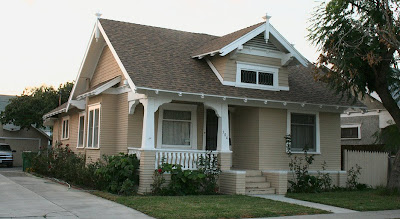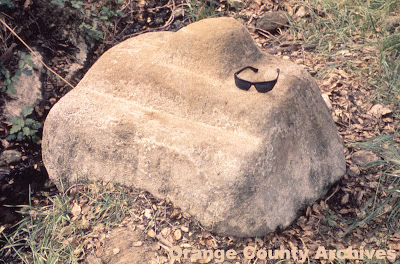
Today’s photo shows
Disneyland around Christmas in 1966. These days the castle is slathered in a LOT more holiday décor. Recently, the castle’s
walk-through was rebuilt and re-opened.
.
If you enjoyed last week’s posts about my recent
Irvine Ranch Conservancy trip, you should tune in
Real Orange on
KOCE-TV 50 on Friday night. They’ll be airing a segment with
Chris Epting and
Maria Hall-Brown that was shot during that trek. Presumably, you'll get to see more of what we saw that day. For my part, I have one more installment of my Conservancy blog series left to post (soon).
.
Someone is angry that the
Orange County Archives provides
free access to historical photos.
The complaint and many excellent responses are posted on the
Register’s
website. The anonymous complainer is afraid that the Archives will cut into his historical society’s business of selling photos.
.Speaking for myself as a local historian, this seems strange on several levels. First of all, public collections obviously belong to the public. Secondly, each historical collection has different materials, meaning their society will always have something unique to offer. And finally, historical societies
should be (and most
are) thrilled to have easier access to historical images. The key function of a historical society, after all, is to promote an understanding and appreciation for history among the public. Local history is a small pond, and it behooves us to work together toward our common goals.
.The
Register also has
a brief interview with
Phil Brigandi about his new book,
Images of America: Orange. Phil will be signing his book tonight at the
Orange County Historical Society meeting and also on Friday, 6-8pm at Barnes & Noble, 791 S. Main St.,
Orange.
.The public is invited to a Victorian Christmas Open House at
Anaheim's historic
Woelke-Stoffel House (a.k.a. the “Red Cross House”) 418 N. West. St., on Dec. 13, noon to 3pm. This event will also be sort of a rededication of this beautiful building, which has recently undergone a great deal of restoration. The
Mother Colony House Museum next door will also be open. (And yes, the house is also adjacent to the giant ficus which provided Imagineers with inspiration for the
Swiss Family Robinson Tree House at
Disneyland.)
 Here's an ad for the Pacific Electric Railway's "Red Cars" and buses, from the Dec. 31, 1950 issue of the Huntington Beach News. Today they'd also tell you that it was "green" to take mass transit.
Here's an ad for the Pacific Electric Railway's "Red Cars" and buses, from the Dec. 31, 1950 issue of the Huntington Beach News. Today they'd also tell you that it was "green" to take mass transit.






























